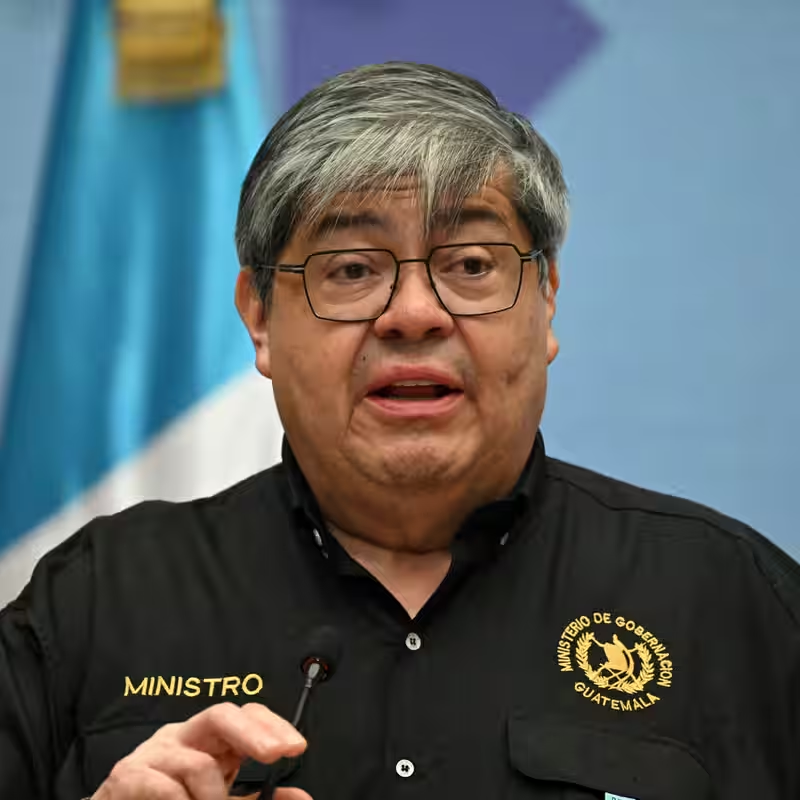Table of Contents
- Mass Escape Revealed Only After It Was Too Late
- Security Failures and Corruption Exposed
- U.S. Reacts Strongly as Gang Labeled Terrorist Group
- Nationwide Manhunt Mobilizes 45,000 Officers
- Political Fallout and Leadership Shakeup
- What Happens Next?
- Sources
Guatemala Prison Break: 20 Inmates Slip Away Over Weeks
In one of the most brazen prison escapes in recent Latin American history, 20 high-ranking members of the notorious Barrio 18 gang have vanished from a maximum-security facility near Guatemala City. The escape—likely carried out gradually over several weeks—was only confirmed by authorities on Sunday, October 13, 2025, sparking a national crisis and raising serious questions about the integrity of Guatemala’s prison system.
Interior Minister Francisco Jiménez admitted there was “no good explanation” for how the inmates disappeared. “I’m not going to deny the reality,” he told reporters during a tense news conference. “This should never have happened.”

How Did the Guatemala Prison Break Happen?
The escapees were held at Fraijanes II, a prison specifically designed to house gang members. Yet officials revealed the facility lacked even basic technology—like facial recognition or digital headcounts—to verify who was actually behind bars.
Luis Alfonso Godínez, the former director of Guatemala’s prison system, said rumors of escapes had circulated for nearly two months. He speculated that inmates may have slipped out “one by one or two by two,” possibly during family visits—a common tactic in past prison break schemes.
Although officials ruled out the use of body doubles this time, they did not dismiss the possibility that prison staff were bribed. “Corruption is systemic,” Jiménez acknowledged, adding that polygraph tests would now be mandatory for all prison directors.
U.S. Labels Barrio 18 a Terrorist Organization
The timing of the escape is especially alarming. Just days before the breakout became public, the U.S. government officially designated Barrio 18 as a foreign terrorist organization—placing it in the same category as MS-13 and major drug cartels.
The U.S. Embassy in Guatemala called the escape “utterly unacceptable” and demanded immediate action. “These terrorists pose a threat to both Guatemala and the security of U.S. territory,” the embassy stated.
Washington has already begun coordinating with Guatemalan authorities, offering support in biometric data collection, prison officer training, and even the design of a new maximum-security facility—reportedly in partnership with the U.S. Army Corps of Engineers.
Nationwide Manhunt Mobilizes 45,000 Officers
Guatemala has launched its largest manhunt in years, deploying 45,000 police officers across the country. So far, only one fugitive—Byron Fajardo Revolorio, alias “Black Demon,” serving a 180-year sentence—has been recaptured.
Authorities are also working with Interpol and neighboring countries, particularly Mexico, to track the escapees. Given Barrio 18’s transnational operations, fears are high that the gang leaders could reestablish command from abroad.
Leadership Purge and Political Pressure Mount
The fallout has been swift. Godínez was fired, along with several other prison directors suspected of ties to the gang. Though not accused of direct involvement, his dismissal underscores the government’s scramble to restore public trust.
Both allies and opponents of President Bernardo Arévalo are demanding a full investigation. The escape has reignited long-standing concerns about corruption within Guatemala’s justice and security sectors—a problem that has plagued successive administrations.
What Happens Next?
With gang leaders on the loose and public confidence shaken, the Arévalo administration faces mounting pressure to deliver results. Plans for a new high-tech prison may offer a long-term solution, but immediate priorities include recapturing the remaining 19 fugitives and rooting out compromised personnel.
For now, the Guatemala prison break stands as a stark reminder of how deeply organized crime is embedded in the country’s institutions—and how vulnerable even “maximum-security” facilities can be.




